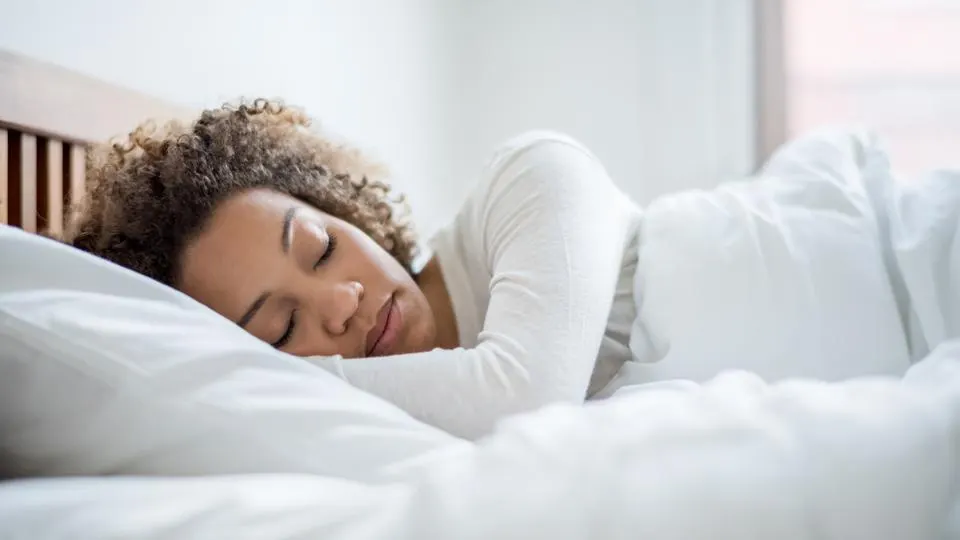Sleep is an integral component of our overall health and daily functioning. It allows our body and brain to recover, repair, and consolidate memories. Insufficient sleep can lead to a multitude of health issues, including a weakened immune system, mood swings, and reduced cognitive performance. For those struggling with sleep, it can be challenging to find the right solution.
Melatonin, commonly referred to as the “sleep hormone,” plays a crucial role in regulating our sleep-wake cycle. With sleep being such an essential aspect of our well-being, understanding melatonin’s impact on our body is paramount to ensuring a restful night’s sleep. This blog post will explore melatonin and its effectiveness as a natural sleep aid, highlighting the benefits of using a melatonin patch.
What is Melatonin?
Melatonin is a hormone primarily produced by the pineal gland in the brain. It is synthesized from the neurotransmitter serotonin, and its production is regulated by light exposure, increasing during the evening and night hours and decreasing during the day.
The production of melatonin is triggered by darkness, signaling to the body that it is time to rest. During the day, bright light suppresses melatonin production, keeping us awake and alert. Melatonin’s primary role is to regulate the sleep-wake cycle. It helps our bodies know when it’s time to sleep and wake up by adjusting to environmental cues like light and darkness.
Benefits of Melatonin for Sleep
- Aligning Sleep-Wake Cycles – Melatonin helps to synchronize our internal clock, ensuring a regular sleep-wake cycle. This alignment is crucial for maintaining a healthy sleep pattern and improving overall sleep quality.
- Supporting Quality Sleep – Adequate melatonin levels are associated with deeper, more restorative sleep. As one of the best sleep aids, melatonin promotes relaxation and facilitates the transition into the various sleep stages, allowing for a more rejuvenating night’s rest.
- Reducing Sleep Onset Latency – Melatonin has been shown to shorten the time it takes to fall asleep, also known as sleep onset latency. This is particularly helpful for those who experience difficulty falling asleep or maintaining a consistent sleep schedule.
Melatonin as a Natural Solution for Sleep Struggles
Sleep Disorders and Melatonin
Melatonin supplementation can be beneficial for individuals suffering from certain sleep disorders, including insomnia and delayed sleep phase syndrome. It helps in regulating the sleep-wake cycle and promoting restful sleep.
Melatonin for Shift Workers
Shift workers often experience irregular sleep patterns due to their varying work hours. Melatonin can help them adapt to these changes and maintain a more consistent sleep schedule.
Travel and Jet Lag
Melatonin is an effective aid for mitigating the effects of jet lag. By adjusting the internal clock to align with the new time zone, travelers can minimize sleep disruptions and adapt more quickly.
Age-related Sleep Decline
Melatonin production naturally decreases as we age, contributing to poor sleep quality and insomnia in older adults. Supplementing with melatonin can help improve sleep patterns in this population.
Types of Melatonin Supplements
- Melatonin Pills – One of the most common forms of melatonin supplementation, melatonin pills are available in various dosages and can be taken orally.
- Melatonin Gummies – For those who prefer a chewable option, melatonin gummies offer a tasty and convenient alternative to pills.
- Liquid Melatonin – This is another option that allows for easy dosage adjustments and rapid absorption.
- Melatonin Patches – Also known as sleep patches, melatonin patches offer a unique method of delivery, providing a steady release of melatonin throughout the night. These patches have gained popularity for their convenience and effectiveness.
Melatonin Patches: A Convenient Option
A melatonin patch is a transdermal patch that delivers melatonin through the skin, allowing for a steady, controlled release. This ensures optimal melatonin levels are maintained throughout the night, promoting restful sleep.
Benefits of Melatonin Patches
One of the key advantages of using melatonin patches is their ease of use. They can be applied directly to the skin, eliminating the need to swallow pills or measure liquid doses. The gradual release of melatonin also helps maintain consistent levels throughout the night, which may provide more restful sleep compared to other forms of supplementation.
How to Use Melatonin Patches
To use a sleep patch, simply follow the instructions provided on the packaging. Typically, it is best to apply the patch to a clean, dry, and hairless area of the skin about 30 minutes to an hour before bedtime. After a night’s sleep, the patch should be removed and properly disposed of.
Tips for Maximizing Melatonin Benefits
- Establish a Consistent Sleep Schedule – To enhance the benefits of melatonin supplementation, maintain a consistent sleep schedule by going to bed and waking up at the same time each day, even on weekends.
- Create a Sleep-Friendly Environment – A comfortable and quiet sleep environment is essential for a good night’s sleep. Keep the room cool, dark, and free of noise, and invest in a comfortable mattress and pillows.
- Incorporate Relaxation Techniques – Practicing relaxation techniques, such as deep breathing exercises, meditation, or gentle stretching, can help prepare the body and mind for sleep.
- Limit Exposure to Blue Light – Minimizing exposure to blue light from electronic devices before bedtime can support melatonin production and help signal the body that it is time to sleep.
Good sleep is vital for overall health and well-being. By addressing sleep struggles with natural solutions like melatonin, individuals can experience improved sleep quality and reap the benefits of a well-rested life. Melatonin patches offer a convenient and effective means of supplementation, providing a steady release of melatonin throughout the night. By following the tips outlined above and incorporating a sleep patch as needed, individuals can overcome sleep struggles and achieve a more restorative night’s sleep.

